Here are a few tips to help you better your riding skills and also prepare for a trip to the mountains or an adventure ride.
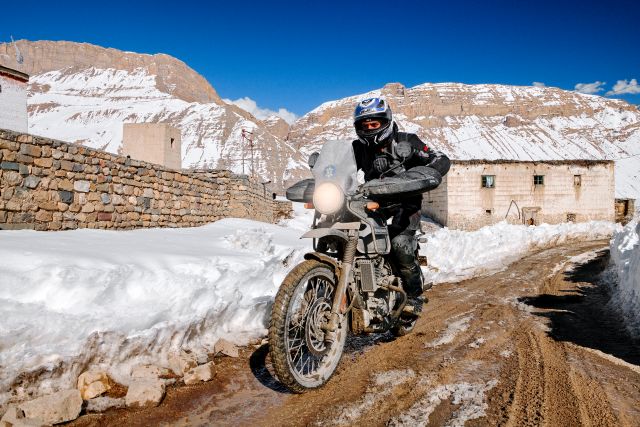
Story: Azaman Chothia
Photography: Clifton Shipway and Royal Enfield
We’re sure that once the COVID-19 pandemic becomes a thing of the past, many are going to pack their bags and head out for a holiday destination of their choice. Bikers who have always dreamed of heading to high-altitude mountains or adventure trails to conquer them on a motorcycle are surely going to tick mark that particular item in their bucket list.
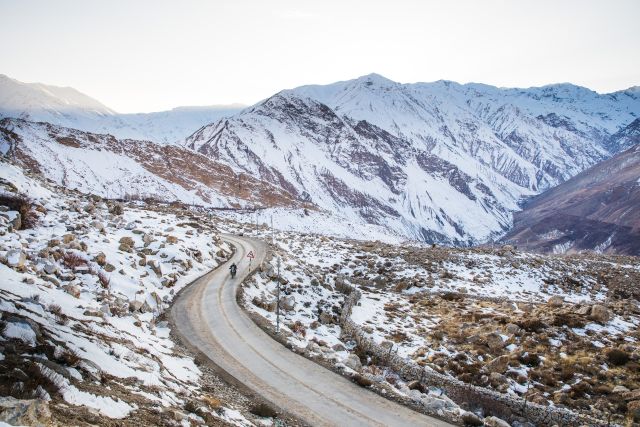
My two such ride experiences have been with Royal Enfield and they taught me a lot. One was a ride at the peak of the rainy season through parts of Goa you wouldn’t normally visit and the second was a ride to the mountains of Spiti Valley in Himachal Pradesh.
Riding through off-road sections needs considerable skill and the best way to learn is to keep practising. Every time you go off-road riding, you will learn something new about how the motorcycle handles and how and where input needs to be given to the motorcycle. The first tip to follow while riding on off-road terrain is to hold the handle loosely, which lets the front wheel move freely. This allows the front wheel to find the best grip through that section and prevent the bike from losing stability. If a section is extremely slushy or packed with black-ice, you are most likely to lose the front end and this demands you to also use your strength to suddenly pull back the handle to avoid a fall. A good trick is to keep both your legs off the motorcycle and use them to help move the bike. Keeping your legs down also avoids serious injury in case of a fall by mainly keeping your leg from being trapped under the motorcycle.
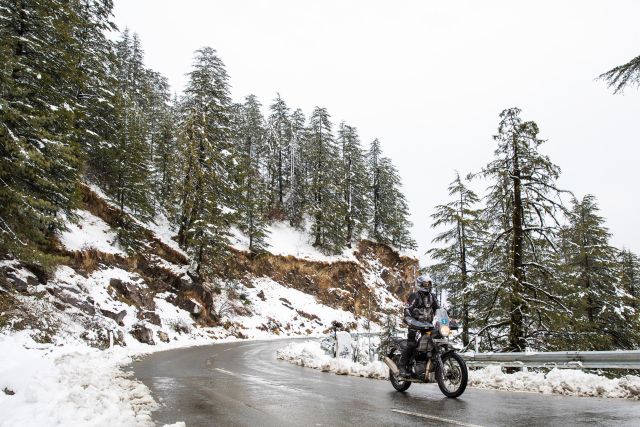
Riding up a slope in slush or on rocks is not as easy as the hill-climb pros make it look. Getting stuck in the middle of a slope with low grip ruins the momentum of the motorcycle when it is climbing. This is because most riders tend to engage the clutch while climbing a slope when they become slow or lose traction. The only way to start again would be to let the bike roll back to the starting position. The trick to counter this problem is to start off with a stable acceleration and move your hand away from the clutch, hold the handle loose, and let the bike find its way to the top.
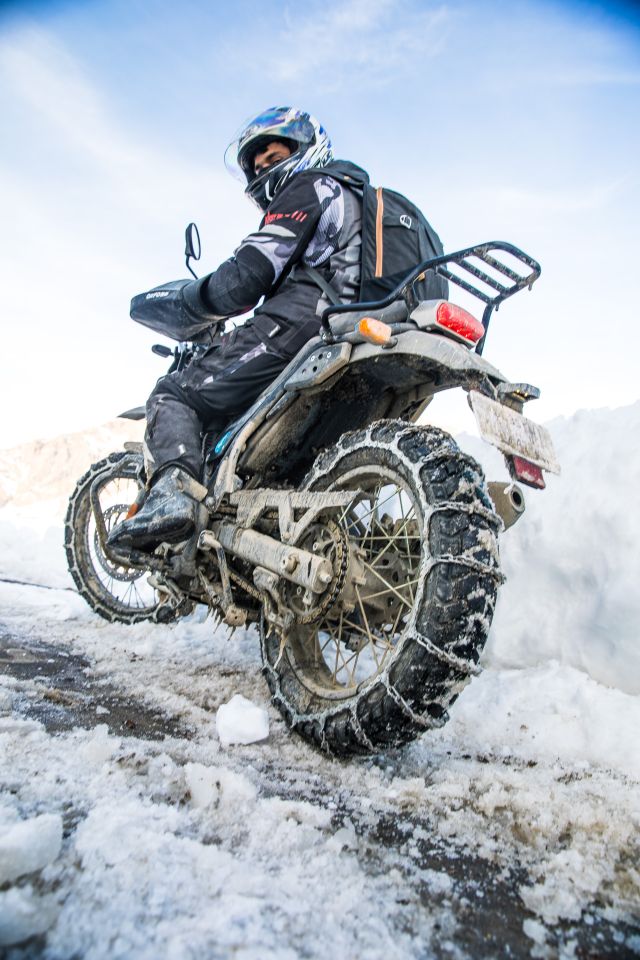
In areas with thick layers of ice and snow, snow-chains need to be fastened on to the tyres. Riding with snow-chains on the tyres gives you the confidence to cross these extremely slippery areas as you can feel them digging through the snow to provide grip. Even with the chains on, the bike will lose traction at the front in situations where the ice is too thick to dig through. That is where you will have to use your body weight to balance the bike with a stable hand on the accelerator.
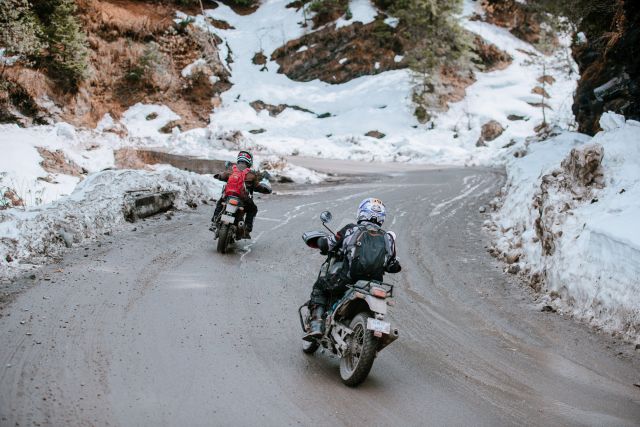
Standing up and riding is another trick that makes off-road riding faster and more fun. It would be advisable to first be comfortable with the motorcycle you are going to try this on. The trick to master this technique is to grip the side-panels and the rear of the tank of the motorcycle with your legs and keep your knees slightly bent. If you think about it, this technique makes your legs act like a pair of shock-absorbers which is why it reduces the strain on the bike suspension as all the bodyweight is now on your legs and not the seat. When standing, one will also have to make slight adjustments to how they hold the handlebar. When going in a straight line, you will have to stand while moving weight to the rear to carry higher speeds, but in turns, all bodyweight should be shifted to the front of the bike to give the front-end better traction.
To prepare for such a ride, the first obvious items to carry are full riding gear and a helmet. An important thing that will surely help is to try and get riding boots that are completely waterproof. This is because off-road sections in rainy areas have a lot of slush and, at some places, water-crossings with knee-deep water. If you do not have waterproof boots, a trick that helps do the job is plastic bags that you can wear on your legs before putting on the shoes. Another suggestion would be to get shoes that use an adjustable snap-lock to be fastened. When shoes that use zips get wet and dirty, they tend to freeze and jam up, which, in turn, restricts the movement of the zip. In most situations, try keeping yourself and your belongings waterproofed to enjoy the ride without being drenched.
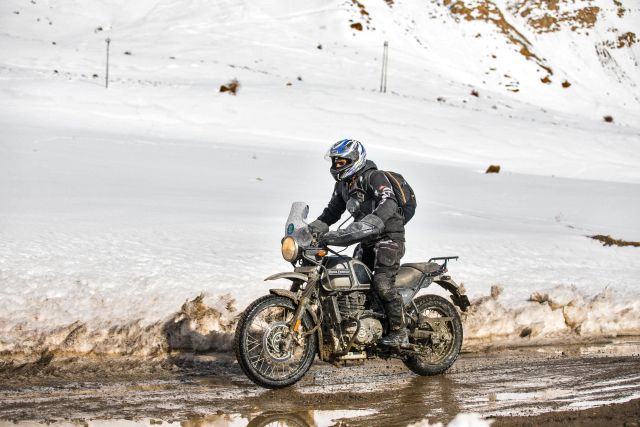
Apart from these tricks, there is a lot more to learn about off-road riding. My suggestion to you all would be to first take part in a ride with a group that has professionals leading it. This helps you gain a lot of knowledge and also have peace of mind, knowing that you have a bunch of riders and a crew to support you through the journey.
Here are some important tips to keep in mind:
- Always be prepared and pack keeping the terrain and climate of the location in mind
- Waterproof riding shoes make for a more comfortable trip and avoid the chances of frostbite
- Before the ride, adjust the suspension of the motorcycle according to your weight
- Carry all necessary tools and spare parts depending on the duration of the journey
- Check the tyre pressure and fuel level every time you stop for a break when riding
- When going into a left corner, keep your body straight and your left leg far out while applying weight on the foot-peg on the opposite side and vice-versa
- Do not use the front brake off-road when the bike is tilted in either direction.
- When far away from home on tours, ride only up to a maximum of 60 per cent of your abilities to be safe at all times
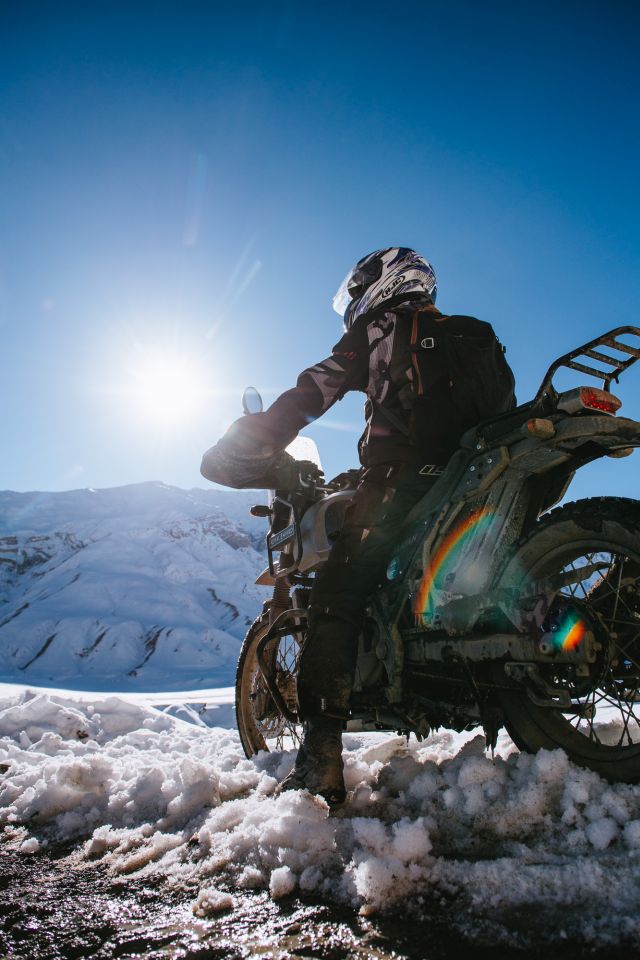


Leave a Reply